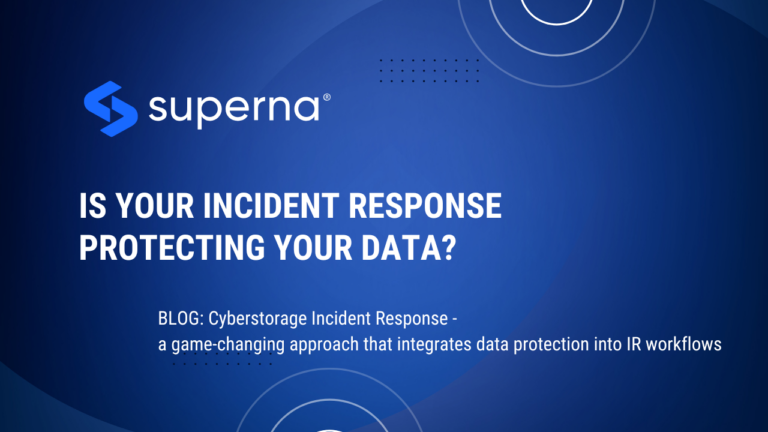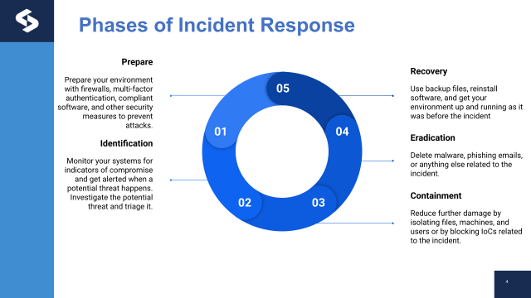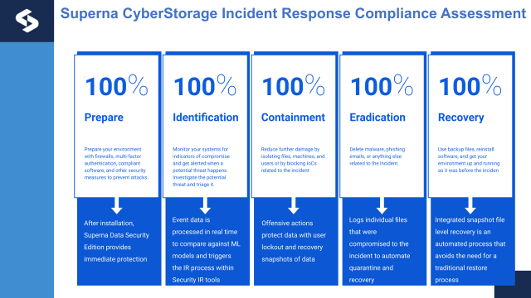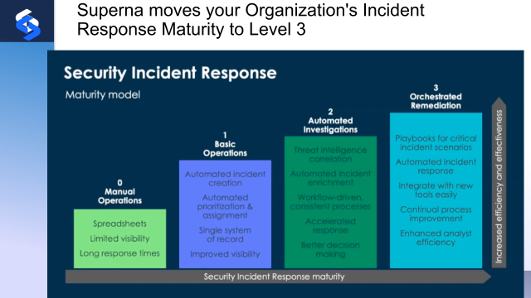What is Cyberstorage Incident Response
- Date: Jan 16, 2025
- Read time: 5 minutes

About the Author
Andrew MacKay – Chief Technology & Chief Strategy Officer Of Superna
Abstract
Imagine this: your organization faces a major cyberattack. Alarms go off, teams scramble and spring into action with cybersecurity tools and processes. Yet, amidst the chaos, the most vital asset—your data—remains exposed. This is the reality for many enterprises relying on traditional Incident Response (IR) strategies that often overlook the heart of their digital operations.
Incident Response is a cornerstone of cybersecurity, ensuring organizations prepare for, respond to, and recover from threats. But in a world where data is both a target and a lifeline, standard approaches to IR often fall short. They prioritize devices, networks, and access controls while often neglecting the critical need to protect the data itself.
This gap inspired the rise of Cyberstorage Incident Response—a game-changing approach that integrates data protection into IR workflows. In this blog, we’ll explore why this shift matters, the limitations of conventional tools, and how Superna is redefining resilience with its innovative data security solutions.
Overview
What is Incident Response?
Incident Response is a critical component of a robust cybersecurity strategy. It enables organizations to prepare for, respond to, and recover from cyber incidents effectively. A well-executed IR plan helps reduce risk, safeguard critical assets, and preserve organizational reputation.
However, the conventional focus of IR often overlooks a fundamental objective in today’s digital enterprises—data protection. Data, the lifeblood of modern organizations, is inadequately prioritized in traditional IR strategies, which emphasize devices, Identity and Access Management (IAM), and networks via SIEM and SOAR platforms, tools used to monitor and respond to threats across networks and systems.
At Superna, we believe this perspective falls short of addressing the core goal: protecting data. Enter Cyberstorage Incident Response.
What is Cyberstorage Incident Response?
Definition: Cyberstorage Incident Response extends data protection capabilities into SIEM and SOAR platforms—think of it as extending the reach of traditional tools into the heart of your organization’s data.
It enables security teams to implement user-level blocking, snapshots, and data activity tracking to safeguard organizational data.
While Cyberstorage Incident Response fills a critical need, understanding the challenges of current tools highlights why this innovation matters.
Gartner’s recognition of the Cyberstorage market category underscores the critical need to bridge the data protection gap at the storage layer. As a pioneer in this space, Superna has been leading the charge since 2016 with products like Ransomware Defender (now Data Security Edition), tailored to this need.
Challenges in Traditional Incident Response Tools
Despite their importance, today’s IR tools exhibit significant gaps:
- Lack of automation for data protection: Most tools neglect direct SecOps capabilities for safeguarding data.
- Narrow focus: Emphasis on IAM and devices often ignores the actual data at risk.
- Asset-centric view: Tools prioritize compute hosts, users, and network devices without integrating storage awareness.
- Limited recovery capabilities: Recovery and forensic capabilities at the data layer are often missing.
Phases of Incident Response
A robust IR strategy comprises several phases, often requiring seamless integration across multiple vendor tools. Unfortunately, many enterprises struggle with poorly integrated IR tools, creating inefficiencies and gaps in automation.

Introducing Superna Cyberstorage Incident Response
Gartner’s CSIO surveys highlight the pressing need for investments in data protection and IR functionalities. Superna’s Cyberstorage Incident Response is a game-changing solution offering:
- Broad support for storage platforms, including native Windows Server OS.
- Compliance with NIST and DORA standards for enhanced data protection.
- Integrated, automated data-first security strategies to elevate IR processes.
The image below maps out the functional phases of Incident Response and demonstrates how the Superna Cyberstorage Incident Response technology complies with each phase.

Why Does Incident Response matter?
A mature IR capability directly correlates with successful defense and recovery from cyberattacks. Organizations often fall into four maturity levels, as illustrated below.
Superna’s Cyberstorage Incident Response enables enterprises to achieve Level 3 maturity, characterized by storage-aware response actions, root-cause analytics, and heightened efficiencies in data protection. The outcome? Reduced business impact and enhanced resilience against cyber threats.

How Superna Enables Level 3 Orchestrated Remediation
Achieving Level 3 maturity in orchestrated remediation requires a rapid, centralized Incident Response approach. Superna empowers organizations with the following capabilities to defend against sophisticated cyber threats effectively:
- Rapid Centralized Incident Response:
- A unified and streamlined approach is essential for countering cyberattacks effectively. Superna enables organizations to centralize their response processes, reducing the time to detect and mitigate threats.
- Endpoint Protection Integration:
- Automated actions, such as host isolation and deep scan initiation, are integrated seamlessly with endpoint protection tools. These automations ensure that threats are contained and neutralized promptly.
- Unified Security Tools:
- By consolidating threats and indicators of compromise (IoCs) into a single tool, Superna reduces complexity and enhances visibility for security teams, enabling faster and more informed decision-making.
- Integrated Response Playbooks and Workflows:
- Superna’s solutions embed storage protection within Incident Response tools, providing tailored playbooks and workflows that seamlessly integrate into existing security ecosystems. This ensures that storage protection becomes an intrinsic part of the remediation process.
- Collaborative Organizational Structure:
- Effective Incident Response hinges on collaboration between Security Operations and IT Operations teams. Superna supports this integration, fostering a cohesive approach to threat detection, response, and recovery.
Summary:
This blog explores the evolving landscape of Incident Response (IR) with a focus on bridging critical gaps in data protection through Cyberstorage Incident Response. While traditional IR tools prioritize devices, networks, and IAM, they often overlook the central role of data—the primary target of most cyberattacks. Superna’s innovative approach addresses this deficiency by integrating storage-aware response actions, automated data protection, and seamless workflows into existing SIEM and SOAR platforms. By enabling Level 3 orchestrated remediation, Superna empowers organizations to achieve higher cyber resilience, faster threat mitigation, and reduced business impact from cyberattacks. This data-first strategy positions Superna as a leader in the emerging Cyberstorage category, ensuring enterprises are equipped for the challenges of modern cybersecurity.
Featured Resources

Mastering Cybersecurity Insurance Negotiations: A Comprehensive Guide

Navigating the Digital Menace: A Beginner’s Guide to Ransomware

